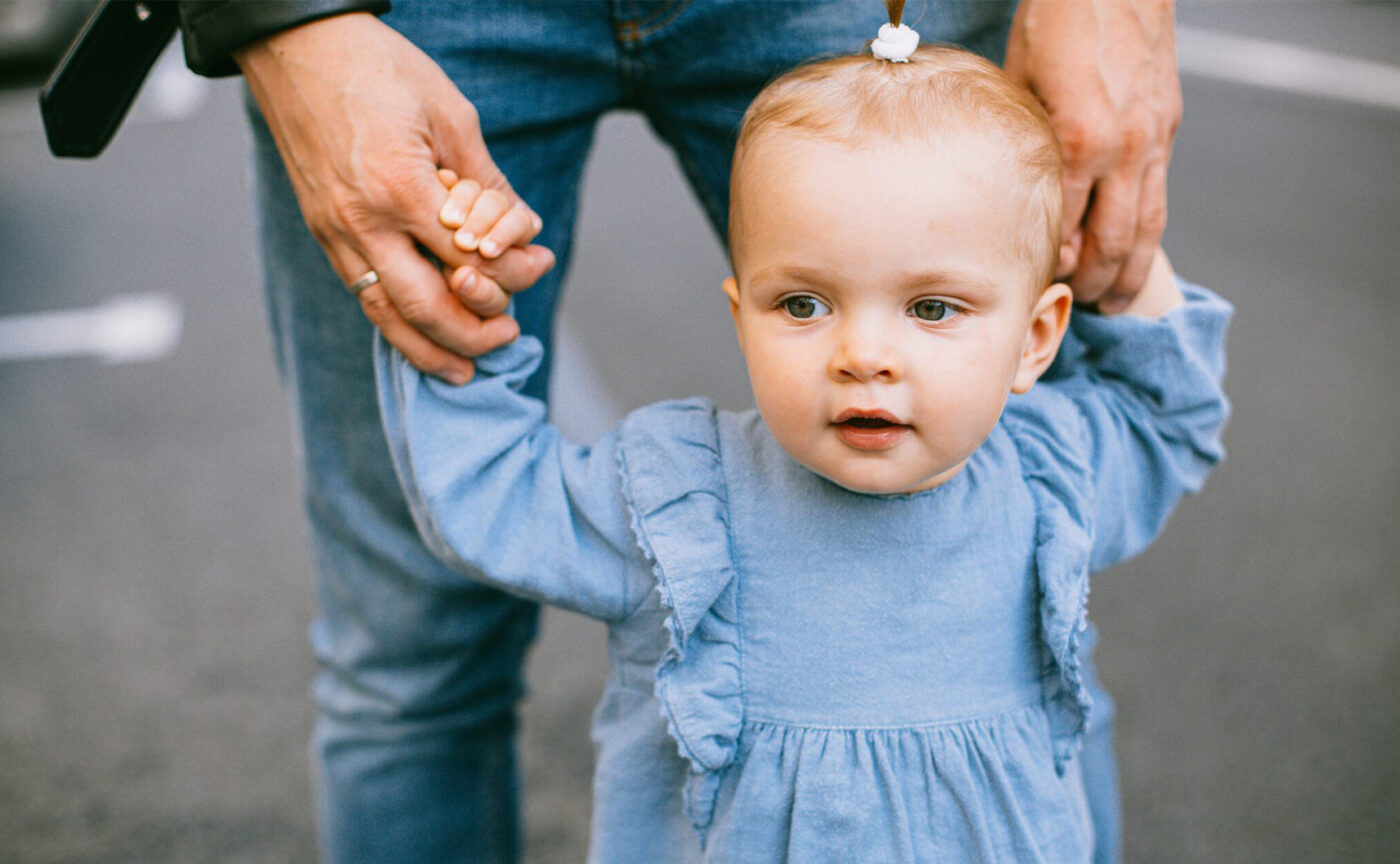8 gross motor skills activities for children
All children develop their gross motor skills at a different pace, but there are also things we can do to encourage them. Discover fun activities that can support their development.
Read more
Watching your child take their first steps is one of the most exciting milestones for a parent. This initial wobbly walk is likely to take place between the ages of nine and 14 months. But it’s important to remember that all children develop at different rates, and certain biological developments need to happen before your child is ready to take their first steps.
By the time they’re getting ready to walk, your child will have been practising sitting unaided and strengthening those core muscles they need for walking. This usually happens between the ages of four and seven months old.
Between seven and ten months of age, they may also be crawling. Although not all babies crawl before walking, for those that do, crawling can help them build the flexibility, muscle and coordination needed for walking.
Around this time, your child might become proficient at squatting. As their thigh muscles develop, this movement becomes a regular part of their play and exploration, laying the groundwork for the next stages of motor development.
Once your child has the strength, at around eight to nine months old, they will begin to pull themselves up using furniture and other props around them.
When they are standing, they will practise balancing and might let go of the prop for increasing amounts of time. At this stage, your child will enjoy cruising around your furniture, so make sure it’s safe for them and there are no sharp edges to bump their heads on.
If your baby has mastered the cruising stage, you can help your baby walk by encouraging them to take independent steps.
Kneel a little way from where your child is standing and hold your hands out towards them. Use words of encouragement to entice them to take steps towards you.
The walk-wobble-bottom bump stage will be repeated (a lot) as they test out and refine their newfound skill. Praise and encourage your child to help build their confidence; they’re taking a big step (Literally!).
Ensuring a safe environment is critical when helping your baby learn to walk. Baby-proofing your home, especially sharp corners and hard surfaces, is essential. Providing a soft, secure area where your child can practice walking reduces the risk of injury and boosts their confidence to explore on their feet.
While many experts suggest that barefoot is best for initial walking stages, there comes a time when shoes are necessary. Choosing the right footwear is crucial. Look for shoes that offer support, flexibility, and non-slip soles to aid your baby’s walking skills.
All children develop at different rates, so it’s important not to compare your child to those around them.
Some children crawl first, others go straight into walking. Some children are keen to get up and moving, and others wait until they are good and ready.
Look at ways to encourage your baby to walk if they are already pulling themselves up to stand, walking whilst holding onto furniture, taking a few independent steps or standing holding onto supports.
As your baby becomes a confident walker, they transition from infancy into toddlerhood. This stage comes with new challenges and adventures. It’s a time to celebrate their independence while continuing to support their ever-growing need to explore and learn.
If your child isn’t walking by 15 months, there is normally nothing to worry about, and they’re likely just taking their own time. But if you have any concerns, you should speak to your health visitor, doctor or your child’s key person at their nursery.
At N Family Club, we closely monitor the children’s development and are always happy to talk about any worries parents might have.